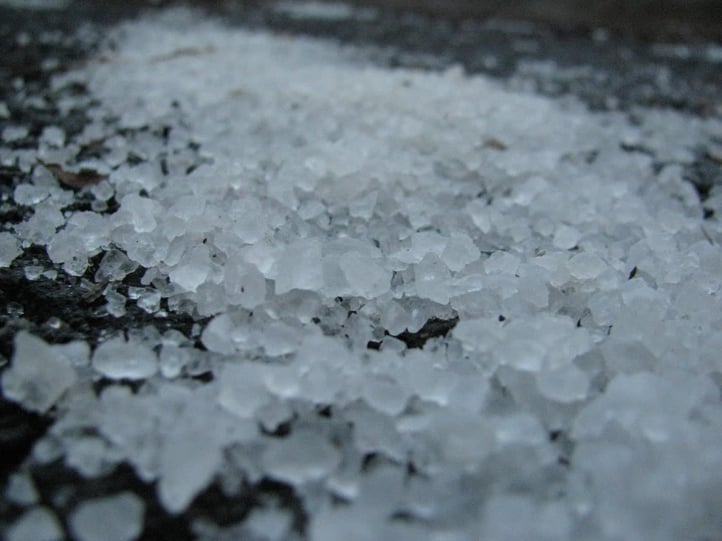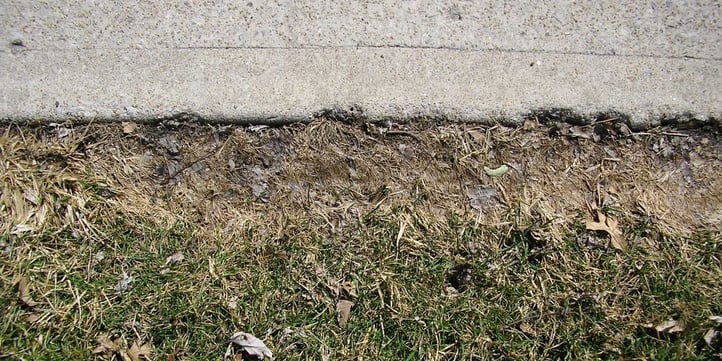
Welcome to 2018, folks! It's great to see you all in the new year.
With the holidays over and parts of Canada smack dab in the middle of a cold, icy winter, many Canadians are turning to road salts to help stabilize their walkways and driveways.
Lawns suffer enough from the damaging effects that snow and ice can cause over the winter months. Compounding things, adding road salt and sidewalk ice-melter to the equation can make things even worse. Areas of the lawn along the edges of sidewalks, boulevards and driveways are often left damaged in the spring when the snow melts, creating an eye sore and a whole mess of problems to deal with.
Here's how to combat salt damage on your lawn.
Salt Damage
In order to remedy the effects of salt damage, one must first learn about what it is and what causes it.
RELATED > What Happens to Your Lawn in Winter
Road salts and ice melters are effectively used to prevent the buildup of snow and ice during the winter months. However, the concentration of these salts that accumulate in places where snow is piled can be very hard on the lawn and the soil - creating damaged areas.
Salt accumulation removes moisture from the soil, preventing it from getting to the plants roots. When this happens plants become dehydrated and die. Salt accumulation also prevents and blocks the plant from absorbing the essential nutrients it requires to grow healthy - including potassium, calcium, and magnesium - instead absorbing sodium and chloride that can become toxic.
Recovery
Now that we know what salt damage is, what can we do to combat it?
To help encourage a quick recovery, aggressively flushing the salt damaged areas with deep water soakings can help leach away the salt below the root levels of the lawn. Core aeration and overseeding practices can also help re-establish turf in the damaged areas, while an application of gypsum will also help free up and break down the salt accumulation in the soil.

Follow us on Facebook for more lawn care tips & tricks in 2018.







